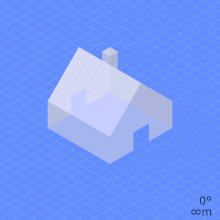
In photography, angle of view (AOV)[1] describes the angular extent of a given scene that is imaged by a camera. It is used interchangeably with the more general term field of view.
It is important to distinguish the angle of view from the angle of coverage, which describes the angle range that a lens can image. Typically the image circle produced by a lens is large enough to cover the film or sensor completely, possibly including some vignetting toward the edge. If the angle of coverage of the lens does not fill the sensor, the image circle will be visible, typically with strong vignetting toward the edge, and the effective angle of view will be limited to the angle of coverage.


A camera's angle of view depends not only on the lens, but also on the sensor. Digital sensors are usually smaller than 35 mm film, and this causes the lens to have a narrower angle of view than with 35 mm film, by a constant factor for each sensor (called the crop factor). In everyday digital cameras, the crop factor can range from around 1 (professional digital SLRs), to 1.6 (consumer SLR), to 2 (Micro Four Thirds ILC) to 6 (most compact cameras). So a standard 50 mm lens for 35 mm photography acts like a 50 mm standard "film" lens on a professional digital SLR, but would act closer to an 80 mm lens (1.6×50mm) on many mid-market DSLRs, and the 40-degree angle of view of a standard 50 mm lens on a film camera is equivalent to an 80 mm lens on many digital SLRs.
- ^ Tim Dobbert (November 2012). Matchmoving: The Invisible Art of Camera Tracking, 2nd Edition. John Wiley & Sons. p. 116. ISBN 9781118529669.
- ^ Neil Wayne Northey (September 1916). Frank V. Chambers (ed.). "The Angle of View of your Lens". The Camera. 20 (9). Columbia Photographic Society.